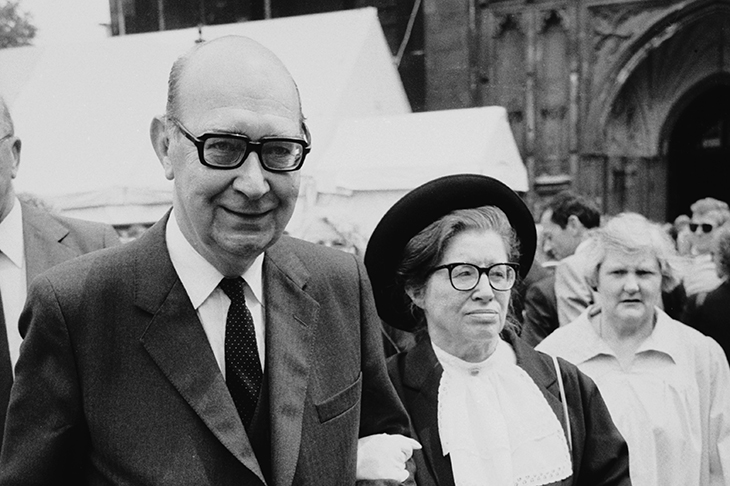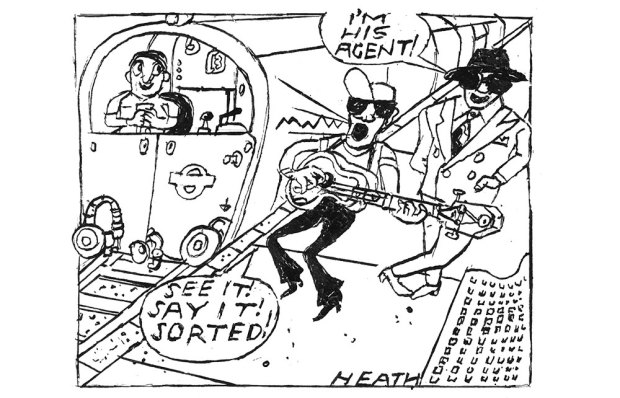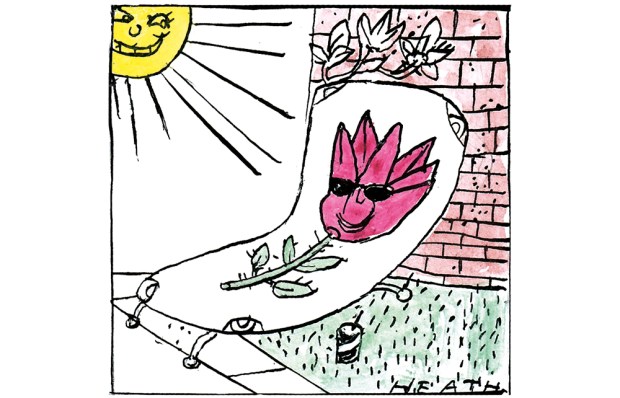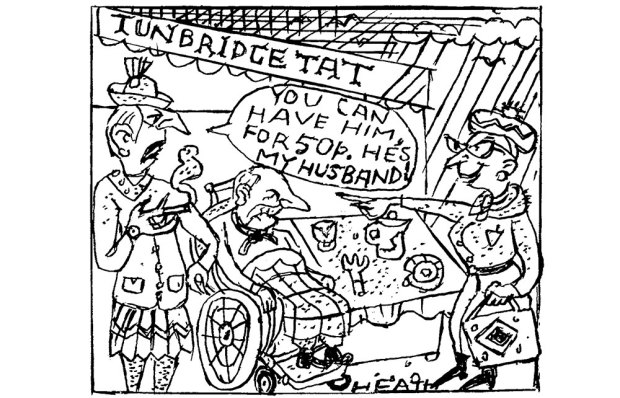I am memorialised twice in my village church. Not in some premature lapidary way, but in the visitors’ book. The first time was with my toddler, when I wrote her name down. Some years later I showed her that scribbled evidence and inked us in again. There we were, here we are.
I always sign these modest manuscripts, with their columns for date, name, address and comments, and I’m always touched by the commonplaces: ‘So peaceful.’ ‘Thank you for being open.’ ‘Beautiful.’ Sometimes the signatories are far from home; tourists who stumble in, or those searching out forebears. On a recent trip to Ludlow, in pursuit of A. E. Housman, I randomly opened the book in St Laurence’s, where he lies interred. Visiting on 22 November 2017, from 90 miles away in Calne, were Michael and Janice Housman. Distant relatives? They don’t say.
It’s funny how often the names of those I know turn up. One, a professor of the ancient past, left his in the 11th century church of St Oswald’s, Widford, a sublimely remote survivor of an otherwise disappeared medieval village by the Windrush in the Cotswolds. Another, a student of antiquarian disposition, made his mark in the book in the Norman church of St Mary, Wissington, near Bures. Inside, an animated wall painting of a dragon named the ‘worm of Wormingford’, seemingly associated with an escaped ‘cockadrille’ (crocodile?) brought back from the crusades for Richard the Lionheart, which then developed a taste for the local sheep. ‘I prefer this to my church,’ my friend notes. That would probably be Christ Church, Oxford. A few lines down, there’s the poet Tom Paulin.
Philip Larkin in ‘Church Going’ signs a book near Belfast, donates an Irish sixpence and reflects that the place was ‘not worth stopping for’. Another friend discovered, from perusing the books stashed in the choir loft at St Mary and St David, Kilpeck, Herefordshire, that he stopped again, this time with his lover, Monica Jones. The two were given to exchanging cards featuring animals, particularly rabbits. The ancient church is famous for its Disney-like carvings of creatures, Bugs Bunny among them. He penned: ‘4 August 1967: M. M. A. Jones Northumberland | P. A. Larkin Hull. Laughed fit to bust.’
Lord Byron was too naughty to be buried in Westminster Abbey and lies beside the daughter he knew all too briefly, Ada Lovelace, the computing pioneer, in the church of St Mary Magdalene, Hucknall. The long-lost book recording those paying him observance recently turned up in a church sale in Savannah, Georgia, and was donated to the National Library of Scotland.
Among its signatories are Washington Irving, Martin Van Buren (later the eighth president of the United States) and the Napoleonic General Lallemand, as well as one or two lovers, I suspect.
I hope that these documents continue to survive in a digital age whose traces are so uncertain. When we add our names we connect ourselves, in a little act of faith, with those who have visited before and will do so in the future. Next time, my daughter can sign for herself and put my name next to hers.
Got something to add? Join the discussion and comment below.
Get 10 issues for just $10
Subscribe to The Spectator Australia today for the next 10 magazine issues, plus full online access, for just $10.
You might disagree with half of it, but you’ll enjoy reading all of it. Try your first month for free, then just $2 a week for the remainder of your first year.














Comments
Don't miss out
Join the conversation with other Spectator Australia readers. Subscribe to leave a comment.
SUBSCRIBEAlready a subscriber? Log in